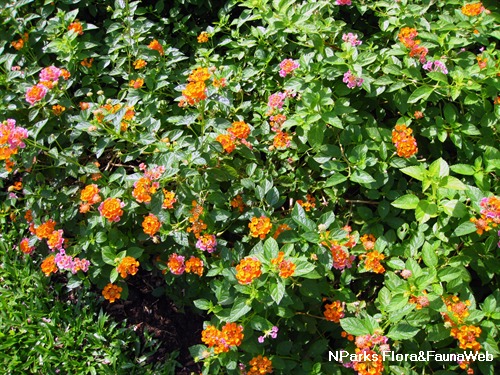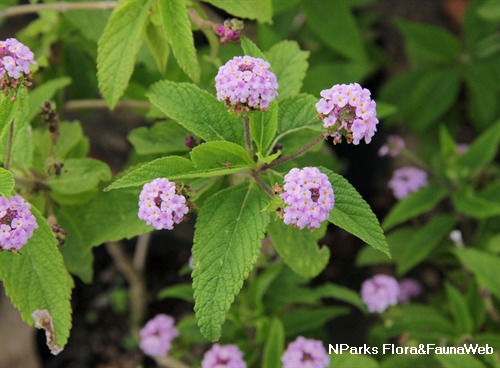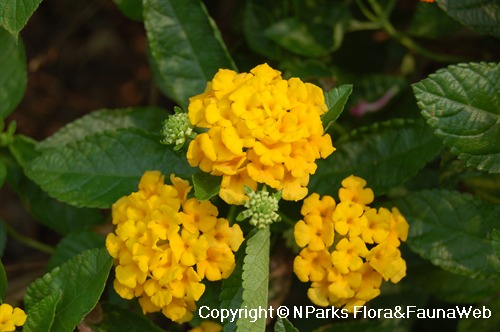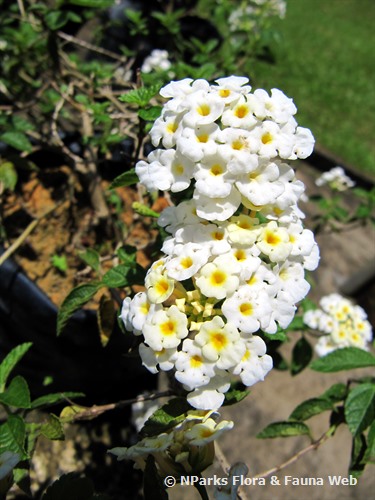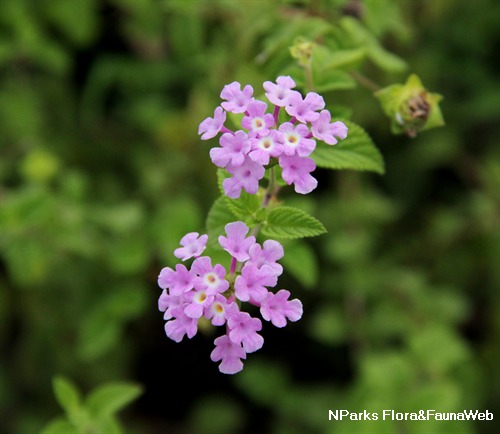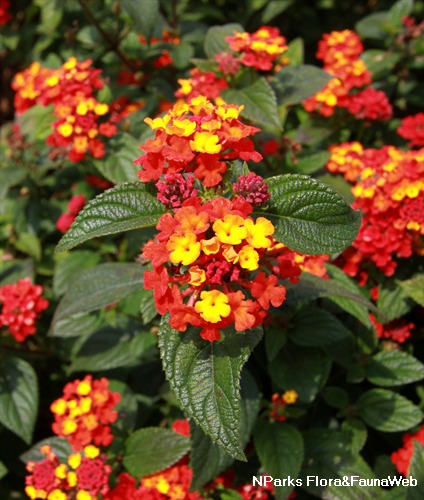
Name
Classifications and Characteristics
| Plant Growth Form | Shrub |
|---|---|
| Lifespan (in Singapore) | Perennial |
| Mode of Nutrition | Autotrophic |
Biogeography
| Native Habitat | Terrestrial |
|---|---|
| Preferred Climate Zone | Tropical |
Description and Ethnobotany
| Growth Form | Evergreen shrub with a rounded or spreading growth habit. |
|---|---|
| Foliage | Opposite leaves are narrowly ovate to ovate with serrate leaf margin. |
| Flowers | Salverform, fragrant flowers are bright red to orange. Flowers are arranged in rounded clusters known as umbels. |
| Fruit | Fleshy fruits are known as drupes. The seeds are typically not viable, because 95% of its pollen is sterile. |
| Cultivation | This cultivar is easy-to-grow and fast-growing. After establishment, it will thrive even under poor growing conditions, such as drought and nutrient poor soils. It will flower best under full sun. The green, unripe fruits are toxic upon ingestion, so it is best to prevent fruiting by promptly removing spent flowers. To promote bushy growth, remove the growing tips by pinching them off. This cultivar can grow aggressively, so restrain its growth with regular pruning or pot it in a large container. Potted plants will flower better if they are allowed to become slightly rootbound. If whiteflies become a problem, spray the upper and lower leaf surfaces with a pesticide containing neem or pyrethrum. It is also susceptible to scale insects and leaf chewing insects. |
Landscaping Features
| Landscaping | This cultivar is planted for its abundant, brightly coloured flowers. It is often planted in flower beds or as a border. It is ideal for butterfly gardens, because it is a nectar and host plant. This cultivar is an excellent choice for water-conscious gardeners, as it is highly drought tolerant. |
|---|---|
| Desirable Plant Features | Fragrant, Ornamental Flowers |
| Landscape Uses | General, Flowerbed / Border, Container Planting, Interiorscape/ Indoor Plant, Coastal |
| Thematic Landscaping | Butterfly Garden |
Fauna, Pollination and Dispersal
| Fauna Pollination Dispersal Associated Fauna | Butterfly Host Plant, Butterfly-Attracting |
|---|---|
| Pollination Method(s) | Biotic (Fauna) (Insects (Butterfly, Moth)) |
Plant Care and Propagation
| Light Preference | Full Sun |
|---|---|
| Water Preference | Moderate Water |
| Plant Growth Rate | Fast |
| Rootzone Tolerance | Saline Soils / Salt Spray, Easy to Grow, Drought Tolerant, Fertile Loamy Soils, Well-Drained Soils, Poor Infertile Soils |
| Propagation Method | Stem Cutting |
Foliar
| Foliage Retention | Evergreen |
|---|---|
| Mature Foliage Colour(s) | Green |
| Foliar Type | Simple / Unifoliate |
| Foliar Arrangement Along Stem | Opposite |
| Foliar Shape(s) | Non-Palm Foliage (Ovate) |
| Foliar Venation | Pinnate / Net |
| Foliar Margin | Serrate / Toothed |
| Foliar Apex - Tip | Acute |
| Foliar Base | Rounded / Obtuse |
| Leaf Area Index (LAI) for Green Plot Ratio | 4.5 (Shrub & Groundcover - Dicot) |
Non - Foliar and Storage
| Stem Type & Modification | Herbaceous |
|---|---|
| Root Type | Underground (Tap Root) |
Floral (Angiosperm)
| Flower Colour(s) | Orange, Red |
|---|---|
| Flower Symmetry | Radial |
| Individual Flower Shape | Salverform |
| Inflorescence Type | Umbel |
| Flower Lifespan on Plant | Several Days |
| Flowering Habit | Polycarpic |
Fruit, Seed and Spore
| Mature Fruit Colour(s) | Black |
|---|---|
| Fruit Classification | Simple Fruit |
| Fruit Type | Fleshy Fruit , Drupe |
Image Repository
Others
| Master ID | 886 |
|---|---|
| Species ID | 2180 |
| Flora Disclaimer | The information in this website has been compiled from reliable sources, such as reference works on medicinal plants. It is not a substitute for medical advice or treatment and NParks does not purport to provide any medical advice. Readers should always consult his/her physician before using or consuming a plant for medicinal purposes. |

